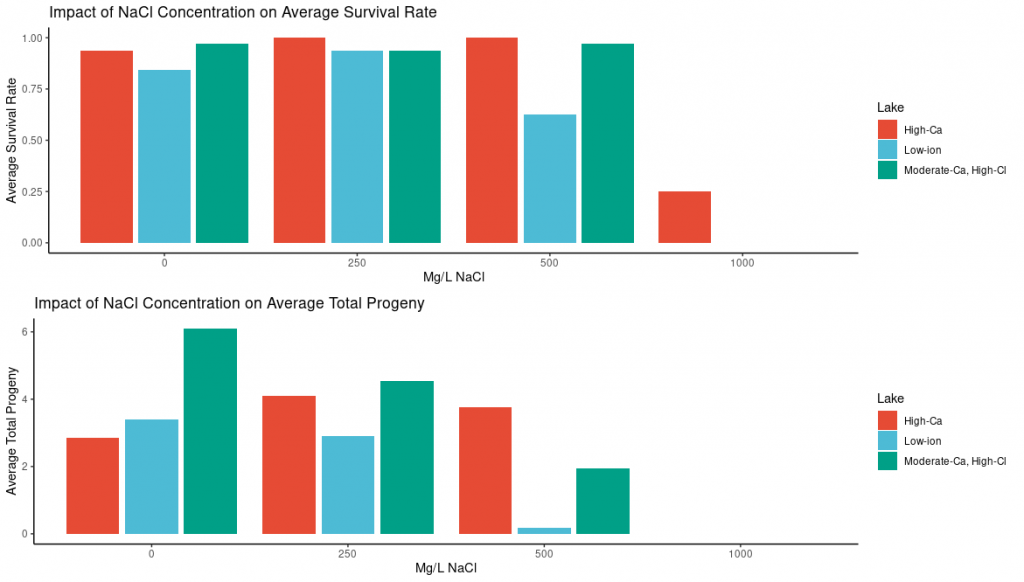
Title of Abstract: Influence of Water Chemistry on Sodium Chloride Toxicity in Daphnia ambigua
Name of Mentor: Mary Rogalski
Mentor’s Organization or Department: Department of Biology, Environmental Studies Program, Bowdoin College
Research Abstract: Road salting is a significant source of chloride in freshwater sources. Daphnia, zooplanktonic crustaceans, are especially sensitive to pollutants and hold an interconnected role as keystone herbivores. This makes Daphnia a useful sensor organism to assess water quality. We investigated the effect of chloride on Daphnia ambigua from different lake waters with varying dissolved ion concentrations. Over 9 days, Daphnia were exposed to Cl- concentrations of 0, 250, 500, and 1000 mg/L. We measured survival time, final body length, and total progeny. Daphnia from the high-Ca lake were least impacted by NaCl, maintaining consistent body length and reproduction at levels toxic to the other Daphnia. Daphnia from the moderate-Ca high-Cl lake were moderately tolerant of NaCl, while those from the low-ion lake were consistently less fit across all metrics. Our findings tie Daphnia’s fitness to their lake’s Ca concentration, supporting the finding that Ca is a mediator of NaCl.
 Madison Thies ’21 and Audrey Jordan ’21
Madison Thies ’21 and Audrey Jordan ’21